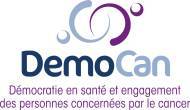CaSSur
Cancers under Surveillance - Diagnosis, Terminology ans experiences
This project on cancers under surveillance, their diagnosis, the terminology surrounding them and the experiences of patients-in-waiting is structured in 3 axes:
(1) Better understanding the needs, experiences and expectations of people diagnosed with thyroid and prostate cancer under active surveillance for at least 1 year in the PACA region.
(2) Analysing the discourses and the terminology of specialists (prostate and thyroid) during the diagnosis disclosure consultation and during the first surveillance consultations (less than 1 year since the initial diagnosis)
(3) Analysing ethical issues related to the surveillance pathways offered to people diagnosed with potentially indolent cancers
Julia Tinland
The number of people diagnosed with cancer but not treated - simply under active surveillance - is likely to increase considerably in the coming years. Several factors can explain this trend. First, significant efforts have been made in France, in Europe and around the world to improve cancer screening and the early detection of cancers. The idea is that intervening earlier can prevent the disease from progressing towards more severe stages that would require more cumbersome and invasive approaches. Furthermore, new diagnostic techniques and technologies, as well as their increasing accessibility, can significantly expand screening and the early detection of cancer. However, the trajectory of certain cancers - particularly prostate or thyroid cancers - is in reality profoundly heterogeneous. It is not at all certain that these cancers, when diagnosed very early, will necessarily develop in such a way as to cause harm to the people concerned, whether in terms of quality of life or longevity. These cancers are then called indolent: they are doomed to remain stable, dormant. In order to avoid problems of overtreatment, the people concerned are often offered so-called active surveillance. Follow-up consultations aimed at assessing the level and speed of progression of the disease at more or less regular intervals are offered to them every few months or every year. Several epistemic, ethical and social issues are raised by this emerging figure in cancerology: that of "patients-in-waiting". These people who have the status of patients without being really sick, plunged into uncertainty, tend to suffer from the impact of their diagnosis much more than of their disease. This population is going to grow quite a bit in the coming years but nevertheless remaining in a form of invisibility. Indeed, as they only see their specialist occasionally during generally short consultations, and almost never the other members of healthcare teams, the experiences of these people, their anxieties, their needs are not taken into considerationin the structuration of surveillance pathways. Furthermore, surveillance pathways can vary greatly in themselves: unequal access to the Diagnosis Disclosure procedure planned within the Cancer Plan 2003-2007, more or less significant involvement of the general practitioner, level of coordination between community medicine and hospital, access to patients' associations, etc. How do people diagnosed with cancer but under simple surveillance experience their diagnosis? How was this diagnosis announced to them? What words were used? How do they understand what was communicated and explained to them? What are their experiences of surveillance? What needs do they express?
Axis 1: On the needs, experiences and expectations of people diagnosed with thyroid and prostate cancer under active surveillance for at least 1 year in the PACA region The objective of the first axis is better to understand the experiences, needs and feelings of people diagnosed with prostate or thyroid cancer under active surveillance through around thirty semi-structured interviews: 15 interviews with people diagnosed with prostate cancer under surveillance for at least 1 year and 15 interviews with people diagnosed with thyroid cancer under surveillance for at least 1 year in the PACA region.
Axis 2: Analysis of the discourses held and the terminology used by specialists (prostate and thyroid) during the diagnosis disclosure consultation and during the first surveillance consultations (less than 1 year since the initial diagnosis) This axis thus proposes to map out clinical discourses and the language used during diagnosis disclosure in order to determine how these cancers are presented to concerned persons, if the word “cancer” is used, what alternatives and lexical fields are mobilised, which professionals are involved in the announcement, how the choice of surveillance is explained, etc. It will consist in carrying out ethnographic observations in oncology departments (prostate and thyroid) during diagnosis disclosure consultations (if possible) or during the first surveillance consultations (less than 1 year after the initial diagnosis). In addition, around ten semi-structured interviews will be conducted with oncologists (prostate and thyroid) in order to collect qualitative data on their own experiences and approaches to active surveillance and the diagnosis of potentially indolent cancers.
Axis 3: Analysis of the ethical issues related to the surveillance pathways offered to people diagnosed with potentially indolent cancers The 3rd axis focuses on philosophical and conceptual work aimed at highlighting the ethical issues that emerge in relation to surveillance. This axis will allow for a collective and co-constructed analysis with partner patients and professionals based on the data collected in axes 1 and 2 so as to identify points of disagreement, clarify terms, reveal ambiguities that may exist and, finally, lay the foundations for the co-construction of decision-making tools and of resources to be made available to patients and/or healthcare professionals.
Financed through the call for projects "Emergence SHS-E-SP" 2024 of the Cancéropôle PACA




 == Image
== Image


